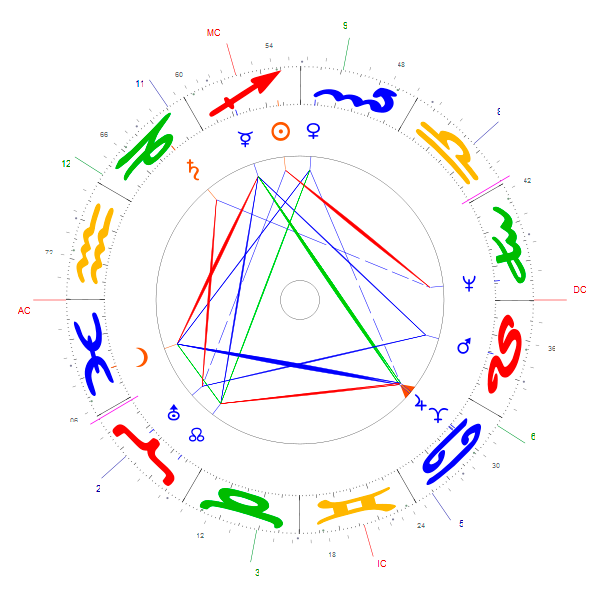Astrological Psychology
Unlike most psychologies that start from pathological pictures, astrological psychology starts from a concept of an organic human being, self-regulated and, therefore, subjectively healthy.
The teaching activities of astrological psychology and counseling or therapy through astrological psychology have a very clear motivation: increase the learning capacity of the person and stimulate their own thinking avoiding offering recipes and prefabricated solutions. In other words, it is about making available to the person an effective tool that will help them to know themselves. Self-knowledge translates directly into more freedom, creativity and joy of life.
One of the most important characteristics of astrological psychology is the holistic (global) approach to the problems of the human being. This particularity is not only taken into account in the psychological conceptual model but also in the selection and use of astrological techniques.
The methodology used must satisfy the basic requirement that all its parts harmonize in a complementary way with each other. So it is an integrated and complete method (which does not mean that it is closed to new developments and improvements). This is the reason why the inclusion of traditional astrological techniques that, although from the logical point of view they may be valid by themselves, were discarded within the globality of the methodology, would be difficult to integrate and would remain as isolated parts. These techniques can diminish the freedom and independence of the human being, or produce a “magnifying effect” and, in this way, distort the proportions of the image of the human being.
The discarded techniques are basically prediction techniques, both classical and modern. These techniques, which undoubtedly work in a timely manner, usually formulate events as something that comes to us from the outside world. In contrast, astrological psychology holds that, in reality, the forces that determine how subjective external events are perceived, how they are experienced, how they are valued and how they are responded to are the experiences or experiences of the inner world of personality . These experiences of the inner world can be traced and understood through a technique called age progression. The progression of age or point of age is a kind of clock that starts at the moment of the person’s birth and advances through the horoscope indicating how the person is interested in the different areas of their horoscope in the course of his life and how, in this way, he is shaping his character.
Primary Elements
The selection of technical means has also been greatly influenced by an important organic requirement: simplification. One of the main features
of the intellect of today’s human being is logical-linear causal thought: a thought that functions essentially analytically. This type of thinking tends to the decomposition of the whole in its parts, that is, to the concentration in the details and to the loss of the global vision. The use of a large number of techniques does not solve the problems of interpretation: in reality, it complicates interpretation more. In astrology, it is often taught that an interpretation is correct only if it can be confirmed with several different techniques. On the other hand, the principle of astrological psychology is totally opposite: if several techniques are used to obtain clarity, it indicates that the primary means have not been sufficiently exploited.
In this sense, in astrological psychology, the primary elements are clearly delimited: they are those mentioned by Ptolemy, which can be classified into four levels:
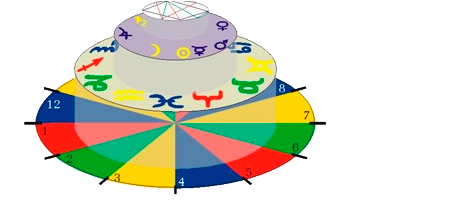
Features
From the horoscope as a necessary requirement for the sensory perception of the uniqueness of the horoscope and its proportions. Each of the elements (levels) mentioned above has its own space assigned in the drawing and, in addition, colors are used to quickly obtain a global view of the distribution of qualities.
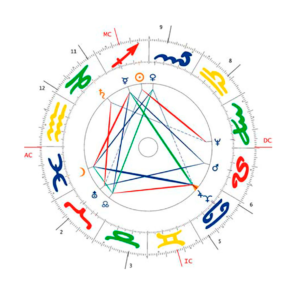
The experience of many years has allowed us to reduce more and more the formulation of the meaning of the planetary symbols until reaching their essential contents, so that there are no overlaps between the planetary definitions. This has been strictly necessary to be able to carry out the investigation, otherwise there were inaccuracies that made it impossible to obtain clear results.
The interpretation of the individual aspects has proved problematic: the sequential application of the definitions of the aspects can raise inconsistencies and even irresolvable contradictions in the interpretation. In general, a planet does not receive a single aspect but is joined to two or more planets by several aspects. These aspects should be interpreted as united since the individual aspects that are part of a figure influence each other.
But conceptually merging the different individual interpretations of aspects is practically impossible. The solution to this problem is in the consideration of the fact that the aspect figures (triangular, quadrangular and more angled figures) have their own meaning independently of the planets. The figures act as a supraconcept for the planets contained in them. Therefore, in astrological psychology, the horoscope is interpreted fundamentally from the structure of aspects. Planets, signs and houses are interpreted at a second level as executing agencies and areas of action. In this way, the interpretation offers a proportionate image of the person (a global image of the character).
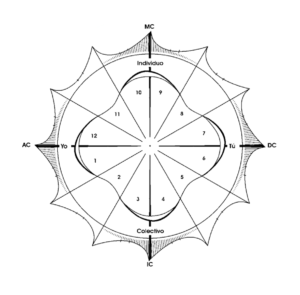
Extensive research has shown that in each house there is an intensity curve, similar to a sine curve, which indicates the intensity of the effect (the strength of the action) of a planet according to its position in the house. The maximum of this curve is at the top and the minimum at the point indicated by the golden section, near the midpoint of the house (the point of rest).
This curve provides accurate information about the available energies and, consequently, employable in life, of each planet. This information is
essential to be able to make a differentiated psychological diagnosis.
They are innovations whose development has been possible thanks to the discovery of the intensity curve. These elements allow a differentiation not easy to do in psychology: they allow to distinguish on the one hand the innate behavior (the hereditary or genetic disposition) and on the other the learned behavior (education, the influence of the environment, the conditioning).
These instruments provide the key to address one of the main groups of psychological problems: conflicts and pressures that occur in childhood and adolescence due to the contrast between the educational efforts of adults, typical of the environment, and the traits of original and congenital character of the child. This definition can be adjusted much more taking into account the personal family space.
Determined by the positions of the Sun, the Moon and Saturn in the horoscope, it shows the subjective experience of the child in relation to the relationship with his parents or, as the case may be, with the persons or institutions that, by way of substitution, have played this paper. It allows to understand the type of union with the father and the mother, as well as possible disorders in the relationship with the other sex that can be externalized in relationship problems. Here are also the true roots of the personal relationship with power and with society.
From these same positions we can also deduce the role model of personality in the adult. The identity and integrity of the person in his three levels (mind, emotions and body) are formed in childhood based on the experience of the family model (roles of father, mother and child). This can be deduced from the positions of the Sun, the Moon and Saturn in the horoscope, and the aspects between them.
In astrological psychology, we usually work with three horoscopes: the base horoscope or radix, the horoscope of the houses and the horoscope of the Lunar Node. The latter incorporates the dimension of the unconscious that Jung described as “shadow”.
Bruno and Louise Huber
The methodology and set of techniques that today are used by the Astrological Psychology, were initially researched and developed by Bruno and Louis Huber, founder of A.P.I. the initials of the Astrologishes Psychologues Institut in Adliswil, Switzerland (1962-2012).
Bruno and Louise Huber devoted their lives to the research, development and application of Astrological Psychology. More than 50 years of intensive research focused on counseling and psychological therapy allowed Bruno and Louise Huber, among others, to structure a form of astrological psychology that offers a new way of interpreting a natal chart, examining and giving meaning to the levels of human life, from the central core of the psyche to the environment in which we live.
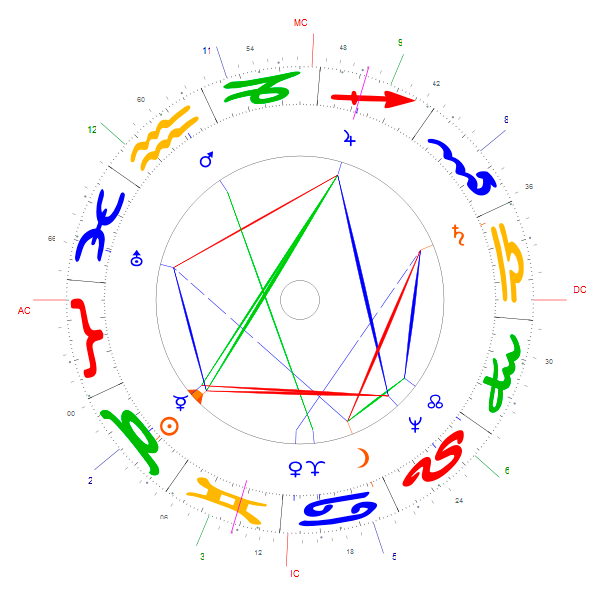
Louise Huber
10/05/1924 – 13/01/2016
